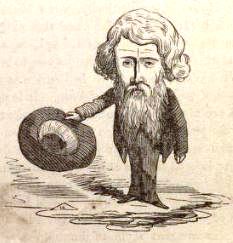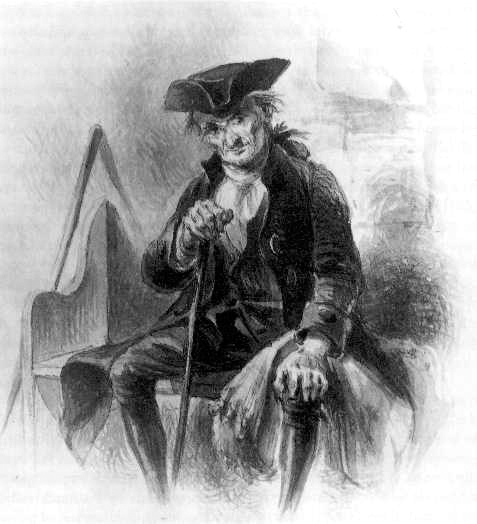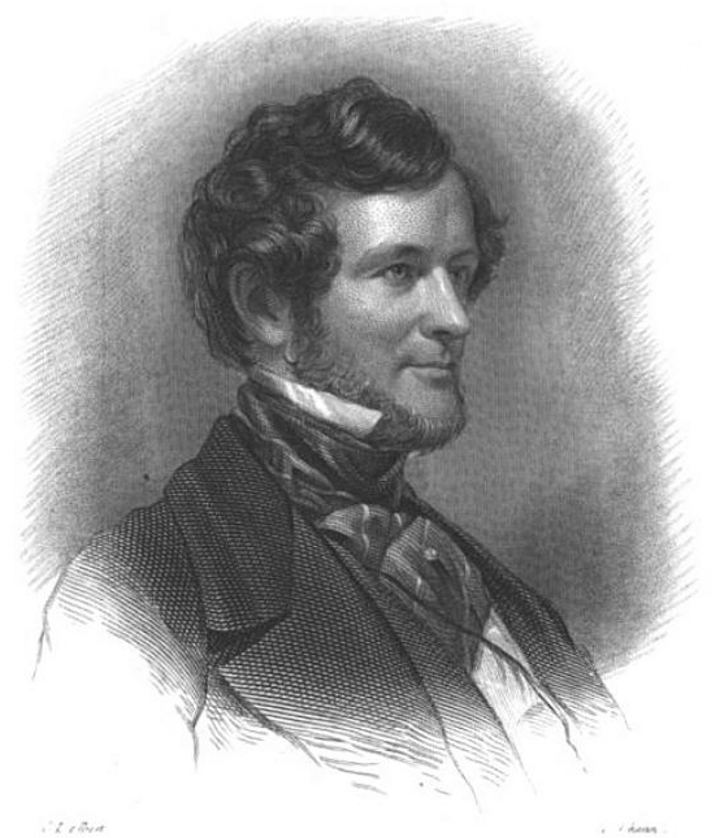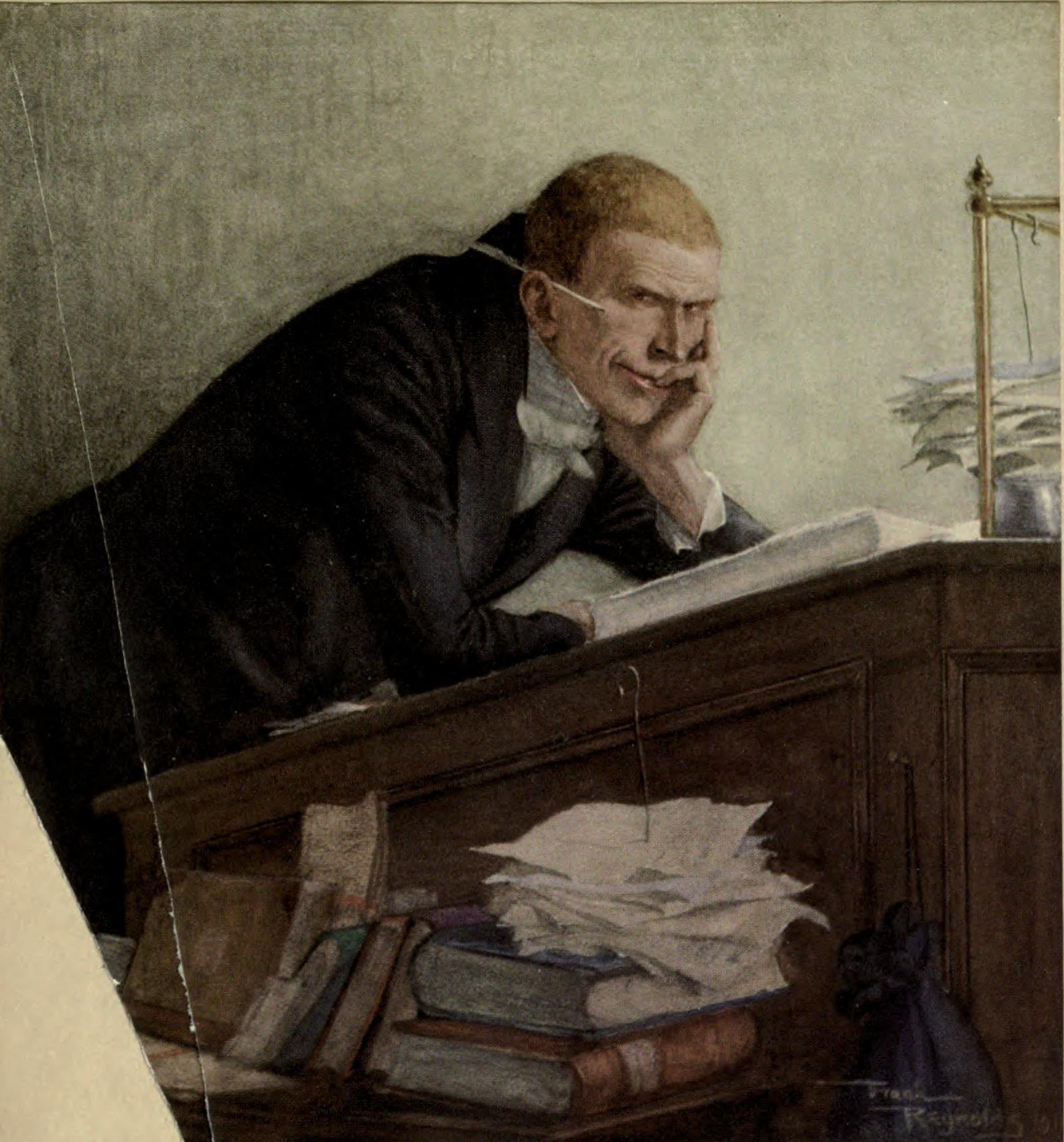|
Thomas Powell (1809–1887)
Thomas Powell (1809–1887) was an English writer and fraudster. He was noted early for his prolific output and social charm, and he entertained a circle of notable authors at his home, often showing-off his skill at mimicking authors’ handwriting. But it became clear that he was putting this gift to criminal use, forging cheques and signatures, and he was repudiated by Charles Dickens (who likely based the character Uriah Heep on Powell), Robert Browning, and others. In 1849 he moved to New York to avoid prosecution, and many American publications printed an accusation by Dickens, which he was unable to substantiate and had to withdraw, settling with Powell out of court. Early career By the age of 21, London-born Powell was contributing work to the literary '' Fraser’s Magazine'', often using the pen name Pierce Pungent. He was a published poet, and his works included ''The Count de Foix, a Tale of the Olden Time'', ''Poems'', ''Dramatic Poems'' and ''Tales from Boccaccio''. ... [...More Info...] [...Related Items...] OR: [Wikipedia] [Google] [Baidu] |
Charles Dickens
Charles John Huffam Dickens (; 7 February 1812 – 9 June 1870) was an English writer and social critic. He created some of the world's best-known fictional characters and is regarded by many as the greatest novelist of the Victorian era.. His works enjoyed unprecedented popularity during his lifetime and, by the 20th century, critics and scholars had recognised him as a literary genius. His novels and short stories are widely read today. Born in Portsmouth, Dickens left school at the age of 12 to work in a boot-blacking factory when his father was incarcerated in a debtors' prison. After three years he returned to school, before he began his literary career as a journalist. Dickens edited a weekly journal for 20 years, wrote 15 novels, five novellas, hundreds of short stories and non-fiction articles, lectured and performed readings extensively, was an indefatigable letter writer, and campaigned vigorously for children's rights, for education, and for other social ... [...More Info...] [...Related Items...] OR: [Wikipedia] [Google] [Baidu] |
Laudanum
Laudanum is a tincture of opium containing approximately 10% powdered opium by weight (the equivalent of 1% morphine). Laudanum is prepared by dissolving extracts from the opium poppy (''Papaver somniferum Linnaeus'') in alcohol (ethanol). Reddish-brown in color and extremely bitter, laudanum contains several opium alkaloids, including morphine and codeine. Laudanum was historically used to treat a variety of conditions, but its principal use was as a pain medication and cough suppressant. Until the early 20th century, laudanum was sold without a prescription and was a constituent of many patent medicines. Today, laudanum is recognized as addictive and is strictly regulated and controlled as such throughout most of the world. The United States Controlled Substances Act, for one example, lists it on Schedule II, the second strictest category. Laudanum is known as a "whole opium" preparation since it historically contained all the alkaloids found in the opium poppy, which are ... [...More Info...] [...Related Items...] OR: [Wikipedia] [Google] [Baidu] |
Bright's Disease
Bright's disease is a historical classification of kidney diseases that are described in modern medicine as acute or chronic nephritis. It was characterized by swelling and the presence of albumin in the urine, and was frequently accompanied by high blood pressure and heart disease. Signs and symptoms The symptoms and signs of Bright's disease were first described in 1827 by the English physician Richard Bright, after whom the disease was named. In his ''Reports of Medical Cases'', he described 25 cases of dropsy ( edema) which he attributed to kidney disease. Symptoms and signs included: inflammation of serous membranes, hemorrhages, apoplexy, convulsions, blindness and coma. Many of these cases were found to have albumin in their urine (detected by the spoon and candle-heat coagulation), and showed striking morbid changes of the kidneys at autopsy. The triad of dropsy, albumin in the urine, and kidney disease came to be regarded as characteristic of Bright's disease. Sub ... [...More Info...] [...Related Items...] OR: [Wikipedia] [Google] [Baidu] |
Wilkins Micawber
Wilkins Micawber is a clerk in Charles Dickens's 1850 novel ''David Copperfield''. He is traditionally identified with the optimistic belief that "something will turn up." His role in the story Micawber was incarcerated in debtors' prison (the King's Bench Prison) after failing to meet his creditors' demands. His long-suffering wife, Emma, stands by him despite his financial exigencies that force her to pawn all of her family's heirlooms. She lives by the maxims, "I will never desert Mr. Micawber!" and "Experientia does it!" (from ''Experientia docet'', "One learns by experience.") Micawber is responsible for a major financial setback to another character. The hardworking, reliable Tommy Traddles, who is saving to furnish a home for the young woman he hopes to marry, allows his optimism to overcome his common sense. He "lends his name" to Micawber by co-signing for his rent, and when Micawber fails to pay, Micawber's creditors seize all of the Micawber family's furniture and p ... [...More Info...] [...Related Items...] OR: [Wikipedia] [Google] [Baidu] |
Thomas Butler Gunn
Thomas Butler Gunn (15 February 1826 – 7 April 1904) was an English born illustrator, writer and war correspondent who spent fourteen years in America. His diaries of this period provide details of his life amongst the bohemian writers and artist in New York including Frank Bellew, Sol Eytinge Jr., Fanny Fern, Thomas Nast, James Parton, Fitz James O'Brien, Alfred Waud and Walt Whitman. Early life The Gunn family had been farming for several generations in the Banbury, Oxfordshire area of England. Gunn's father, Samuel, (1785–1863) grew up on a farm but left to start a grocery business. In 1809, he married Sarah Arnold, and they had two daughters before Sarah died in 1815.Only one of these daughters survived to adulthood, she was Mary Anne who married Joseph Greatbatch, the grandson of William Greatbatch (1735–1813), a potter. The family later changed its surname to Bristol, the maiden name of Joseph's mother. In 1822, the widowed Samuel married Naomi Butler. Their son, Thom ... [...More Info...] [...Related Items...] OR: [Wikipedia] [Google] [Baidu] |
Frank Leslie
Frank Leslie (March 29, 1821 – January 10, 1880) was an English-born American engraving, engraver, illustrator, and publisher of family periodicals. Biography English origins Leslie was born on March 29, 1821, in Ipswich, England as Henry Carter, the son of Joseph Carter, the proprietor of a long-standing and prosperous glove manufacturing firm. He was educated in Ipswich and he then trained for commerce in London. As a boy on his way to and from school, he passed a silversmith's shop whose workers he took a detailed interest in, especially those who engraved designs and letters upon various articles of silver and gold. He took note of the tools that were used and the manner of using them and acquired the necessary tools to do the work himself.Obituary in ''Frank Leslie's Illustrated Newspaper'', January 24, 1880. At the age of 13, he did his first wood engraving of the coat of arms of his home town. At 17, he was sent to London to learn more about the glove-making business ... [...More Info...] [...Related Items...] OR: [Wikipedia] [Google] [Baidu] |
New-York Tribune
The ''New-York Tribune'' was an American newspaper founded in 1841 by editor Horace Greeley. It bore the moniker ''New-York Daily Tribune'' from 1842 to 1866 before returning to its original name. From the 1840s through the 1860s it was the dominant newspaper first of the American Whig Party, then of the Republican Party. The paper achieved a circulation of approximately 200,000 in the 1850s, making it the largest daily paper in New York City at the time. The ''Tribune''s editorials were widely read, shared, and copied in other city newspapers, helping to shape national opinion. It was one of the first papers in the north to send reporters, correspondents, and illustrators to cover the campaigns of the American Civil War. It continued as an independent daily newspaper until 1924, when it merged with the ''New York Herald''. The resulting ''New York Herald Tribune'' remained in publication until 1966. Among those who served on the paper's editorial board were Bayard Taylor, Geo ... [...More Info...] [...Related Items...] OR: [Wikipedia] [Google] [Baidu] |
The Knickerbocker
''The Knickerbocker'', or ''New-York Monthly Magazine'', was a literary magazine of New York City, founded by Charles Fenno Hoffman in 1833, and published until 1865. Its long-term editor and publisher was Lewis Gaylord Clark, whose "Editor's Table" column was a staple of the magazine. The circle of writers who contributed to the magazine and populated its cultural milieu are often known as the "Knickerbocker writers" or the "Knickerbocker Group". The group included such authors as William Cullen Bryant, Henry Wadsworth Longfellow, Oliver Wendell Holmes, James Russell Lowell and many others.Callow, James T. ''Kindred Spirits: Knickerbocker Writers and American Artists, 1807–1855''. Chapel Hill: The University of North Carolina Press, 1967: 104. ''The Knickerbocker'' was devoted to the fine arts in particular with occasional news, editorials and a few full-length biographical sketches.Callow 1967, p. 102. The magazine was one of the earliest literary vehicles for communication ... [...More Info...] [...Related Items...] OR: [Wikipedia] [Google] [Baidu] |
Lewis Gaylord Clark
Lewis Gaylord Clark (October 5, 1808 – November 3, 1873) was an American magazine editor and publisher. Biography Clark was born in Otisco, New York in 1808.Miller, Perry. ''The Raven and the Whale: The War of Words and Wits in the Era of Poe and Melville''. New York: Harvest Book, 1956: 12. He had a twin brother, poet Willis Gaylord Clark. Career He succeeded Charles Fenno Hoffman as editor and publisher of ''The Knickerbocker'' magazine, a role he held for over 25 years (1834–1861). By 1840, it had become the most influential literary publication of the time in the United States, especially through the contributions from such writers as Washington Irving, William Cullen Bryant, Nathaniel Parker Willis, and Henry Wadsworth Longfellow, and by Clark's own departments, the "Editors Table" and "Gossip with Readers and Correspondents". Pecuniary distress caused its discontinuance, and Clark removed to Piermont, New York, where he lived in a residence presented by former contribut ... [...More Info...] [...Related Items...] OR: [Wikipedia] [Google] [Baidu] |
Dombey And Son
''Dombey and Son'' is a novel by English author Charles Dickens. It follows the fortunes of a shipping firm owner, who is frustrated at the lack of a son to follow him in his footsteps; he initially rejects his daughter's love before eventually becoming reconciled with her before his death. The story features many Dickensian themes, such as arranged marriages, Child abuse, child cruelty, betrayal, deceit, and relations between people from different Social class in the United Kingdom, British social classes. The novel was first published in monthly parts between 1846 and 1848, with illustrations by Hablot Knight Browne ("Phiz"). Development Dickens started writing the book in Lausanne, Switzerland, before returning to England, via Paris, to complete it. The full title is ''Dealings with the Firm of Dombey and Son: Wholesale, Retail and for Exportation.'' Plot summary The story concerns Paul Dombey, the wealthy owner of the shipping company of the book's title, whose dream i ... [...More Info...] [...Related Items...] OR: [Wikipedia] [Google] [Baidu] |
Augustus Dickens
Augustus Newnham Dickens (10 November 1827 – 4 October 1866) was the youngest brother of English novelist Charles Dickens, and the inspiration for Charles's pen name 'Boz'. Early life Augustus Dickens was the son of Elizabeth (''née'' Barrow) and John Dickens, a clerk in the Navy Pay Office at Portsmouth. Charles Dickens's pen name, 'Boz', was actually taken from his youngest brother's family nickname 'Moses', given to him in honour of one of the brothers in ''The Vicar of Wakefield'' (one of the most widely read novels in the early 19th century), which when playfully pronounced through the nose became corrupted as 'Boses', and later shortened to 'Boz' – pronounced with a long vowel 'o' through the nose. Early career in London In 1844, Charles Dickens wrote to Chapman & Co., a shipping merchant, trying to obtain a position for Augustus, saying "I have a young brother recently come up from a good school at Exeter, and now living, with his father, at Greenwich...He is qui ... [...More Info...] [...Related Items...] OR: [Wikipedia] [Google] [Baidu] |
Uriah Heep (character)
Uriah Heep is a fictional character created by Charles Dickens in his 1850 novel ''David Copperfield''. Heep is the primary antagonist during the second part of the novel. His character is notable for his cloying humility, unctuousness, obsequiousness, and insincerity, making frequent references to his own umbleness". His name has become synonymous with sycophancy. In the novel David first meets the 15-year-old Heep when he comes to live with Mr Wickfield and his daughter Agnes. Uriah is a law clerk working for Mr Wickfield. He realises that his widowed employer has developed a severe drinking problem, and turns it to his advantage. He encourages Wickfield's drinking, tricks him into thinking he has committed financial wrongdoing while drunk, and blackmails him into making Uriah a partner in his law office. He admits to David (whom he hates) that he intends to manipulate Agnes into marrying him. Uriah miscalculates when he hires Mr Micawber as a clerk, assuming Micawber will ne ... [...More Info...] [...Related Items...] OR: [Wikipedia] [Google] [Baidu] |








